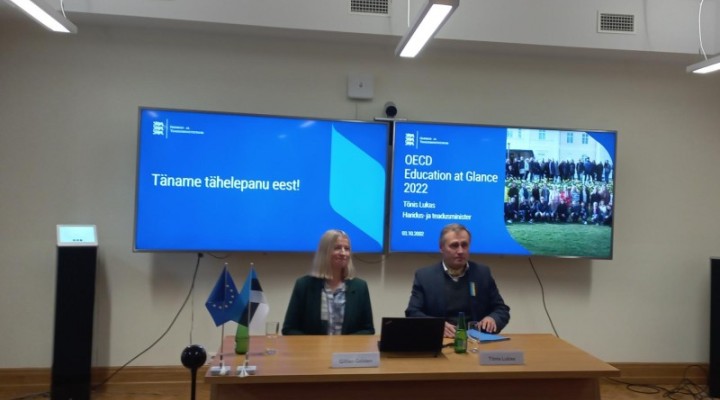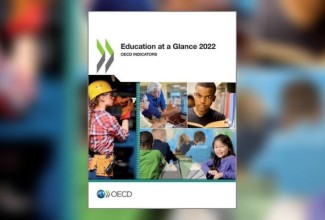According to the Minister of Education and Research Tõnis Lukas, one of the world’s most important compendiums of education statistics confirms that investing in tertiary education serves the interests of Estonia as a whole. “The growing share of tertiary-educated people in no way diminishes the added value that tertiary education provides both to its acquirer and to society,” said Lukas. “It is very important that teachers, as tertiary-educated specialists, receive a competitive salary, and we are taking a step closer to this with the new draft state budget. By dramatically increasing the state budget funding of tertiary education to over 1% of the GDP, we ensure the continued growth of teaching staff both by increasing wages and making doctoral studies more profitable.”
Between 2000 and 2021, the share of tertiary-educated young adults (aged 25-34) increased from 29% to 43% in Estonia. The share of tertiary-educated young adults in Estonia is now higher than in Finland (40%) but lower than the OECD average (46%). Similar to other OECD countries, more women than men reach tertiary education in Estonia – in 2021, 54% of women and 33% of men had a tertiary qualification.
In 2021 the employment rate among 25-34-year-olds with tertiary education in Estonia was 14 percentage points higher than among those with below upper secondary attainment and 3 percentage points higher than among those with upper secondary or postsecondary non-tertiary attainment. On average across the OECD, 25-65-year-old workers with upper secondary or post-secondary non-tertiary attainment earn 29% more than workers with below upper secondary attainment, while those with tertiary attainment earn about twice as much. In Estonia, the earnings advantage of tertiary-educated workers is smaller than the OECD average but still significant. In 2020, Estonian workers with upper secondary or post-secondary non-tertiary attainment earned 6% more and those with tertiary attainment earned 37% more than those with below upper secondary attainment.
In Estonia, 43% of Bachelor’s students graduate within the theoretical programme duration. Across the OECD, the completion rate within the theoretical duration ranges from 12% to 69%. 64% of Bachelor’s students graduate within three years of the end of the theoretical duration in Estonia, compared to 68% on average across the OECD. The completion rate within the theoretical programme duration is on the rise in Estonia.
In Estonia, only 4% of academic staff are under the age of 30. The OECD average is 8%. In contrast, the share of academic staff aged 50 or over is 40% in Estonia, which is the same as the OECD average.
In Estonia, the share of private expenditure at tertiary level is 15%, while the OECD average is 31%. The lower share of private expenditure at tertiary level in Estonia is due to the fact that education is free for full-time students studying in the Estonian language and there are few private universities in Estonia. At the same time, the share of private expenditure at tertiary level in Estonia is higher than in other comparable countries with free tertiary education (e.g. Finland, Sweden, Denmark, Austria).
Salaries represent the single largest expenditure item of the education system, regardless of the level of education. Teachers’ average salaries remain lower than earnings of other tertiary-educated workers in almost all OECD countries including Estonia, and at almost all levels of education. Lower secondary teachers in Estonia earn 9.7% less than other tertiary-educated workers. School head salaries in most OECD countries are well above the earnings of other tertiary-educated workers. In Estonia, the salaries of school heads are only slightly higher.
“Education at a Glance” is the OECD’s compendium of education statistics, the purpose of which is to provide countries an opportunity to compare the impact their education policies have had with that of other countries. The education systems of 38 OECD member countries and their partner countries are analysed in the compendium.
The compendium of education statistics was introduced at a press conference where OECD analyst Gillian Golden presented the data for Estonia in comparison to other countries; Minister of Education and Research Tõnis Lukas supplemented the international comparison with current topics of Estonian education policy.
You can watch the press conference HERE.

